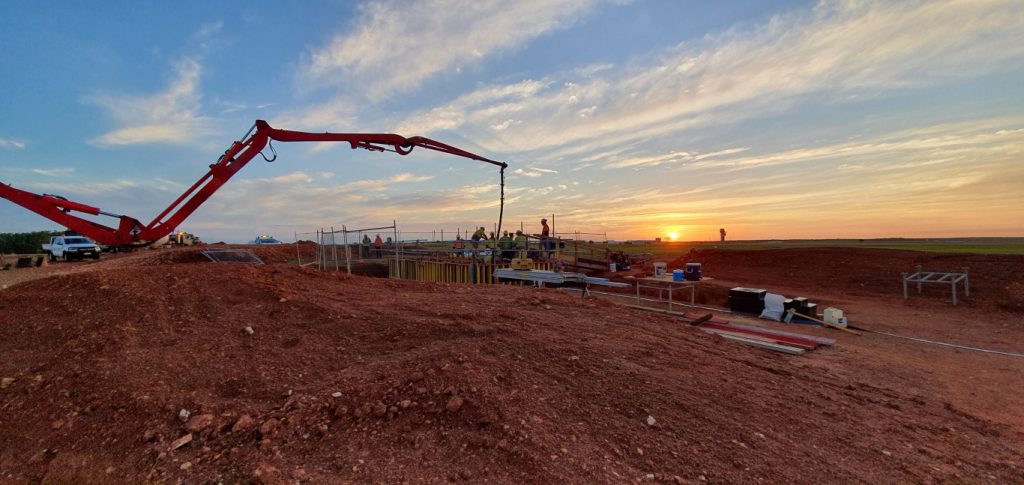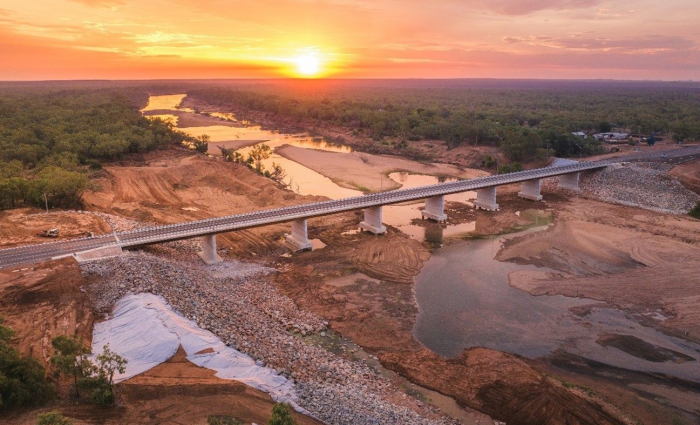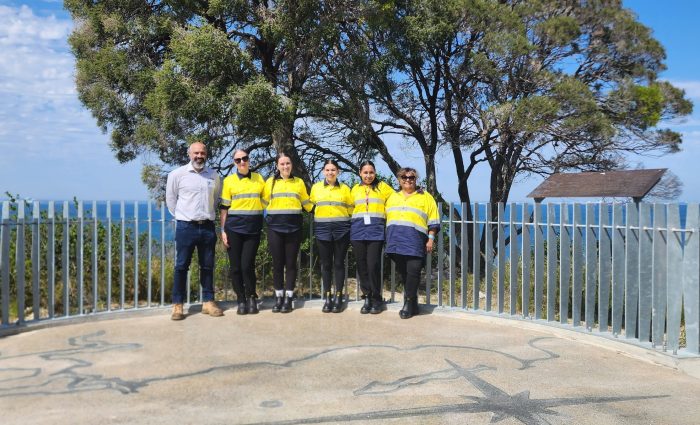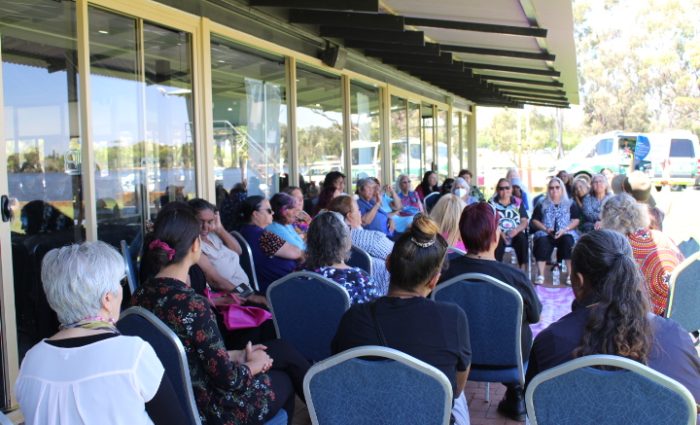This fascinating and significant Defence project has been successfully completed by DDR’s Northern Territory team.
About RAAF Base Darwin
Established in 1940, the Royal Australian Air Force (RAAF) Base Darwin is steeped in history. The base became operational during World War II and was even attacked by Japanese forces. Today, the base is home to approximately 400 Defence personnel and regularly hosts major Defence exercises to test infrastructure, hardware and personnel capabilities. It shares a
runway with Darwin International Airport (DIA).
What is an aircraft arrestor system?
Underneath each main RAAF base is an aircraft arrestor system (AAS) – a life-saving device that prevents aircraft from overrunning the runway should the pilot be unable to stop during landing. In the case of an emergency, air traffic controllers release a cable, which rises from below the runway to about five centimetres above the surface. Once the aircraft’s tailhook engages the cable, the arrestor system’s brakes rapidly decelerate the jet as it travels along the runway.
The project brief
DDR Australia was engaged by the Department of Defence, via Aurecon, to design and construct a new aircraft arrestor system for RAAF Base Darwin. The two main objectives were to:
- Address work health and safety (WHS) issues
- Improve operational efficiencies
The WHS issues related to the four pits, which house the arrestors and are located at each corner of the runway. Of particular concern were their confined-space, vertical entries. The pits also produced CO2 emissions, were vulnerable to water ingress and had the potential to be filled with contaminants.
The pits were also located within the gable markers, increasing operational inefficiencies, and access to the four sites was via unsealed roads. Significant design modifications to the aircraft arrestor system were in order.
Part one: Design
After rigorous consultation with both Defence and DIA, DDR completed the design for a new arrestor system in late 2020. First and foremost, it stipulated that the arrestor pits be relocated to outside the gable markers.
Access to the pits was to be modified and drainage improved to reduce water ingress. Mechanical ventilation was also incorporated to reduce emissions inside the pits, in turn, improving operational access and increasing cable reset time. New, sealed roads were to be
constructed for safer access to the system.
Part two: Construction
Works on the two western pits commenced in early 2021 and incorporated the aforementioned design elements. Upon completion, DDR mobilised to the opposite end of the runway and completed the eastern pits in September 2021.
As a result of DDR’s familiarity with both working airside on Defence bases and liaising with DIA stakeholders, the team was entrusted with the construction of new, sealed roads at both ends of the runway. The roads, which were completed in early 2022, feature improved drainage, making it safer for operators to access the arrestor system pits – particularly those who use the roads in Darwin’s wet season. Sealing the roads was also to reduce the risk of service vehicle damage.
Upgrades to the arrestor system’s electrical cables were undertaken to future-proof the
system for when it requires an electrical rewind BAK 12 unit (it is currently a diesel engine system).
As part of the relocation of the pits, new BAK 14 (rollers, sheaves) were constructed for cable alignment. This was as per Zodiac Aerospace and Babcock recommendations to prevent excessive wearing that would reduce cable life expectancy.
On the back of the successful construction of the pits, DDR was engaged to perform maintenance services to the arrestors for 12 months, before handing over to the EMOS (Estate Management of Services) contractor in August 2022.
Overcoming two main challenges
Working within a live, international, 24/7 airport
Working within a live, international, 24/7 airport Constructing the aircraft arrestor system on the Darwin International Airport runway, amid active flying and during the wet season, provided significant challenges. DDR addressed these issues through:
- Procurement of approved work safety officer
- Airfield communication briefings for all staff
- Acquisition of requisite safety permits
- Facilitation of risk workshop with DIA and RAAF
- Formulation of risk mitigation techniques, including compliant site entry and exit
- Ensuring foreign object debris (FOD) – which can cause significant damage to aircraft engines and potentially be catastrophic – was cleared from construction site
- Daily inspections of vehicles, plant and equipment to prevent FOD prior to site entry
Reducing work health and safety risk
As well as running a large civil works project near a runway for a period of 12 months, DDR also encountered a range of WHS risks on site. Below are some of the ways DDR was able to address and combat these risks.
- Attainment of building certification for American-designed AAS (first building certification for American AAS in Australia)
- Reduction in need for confined-space entry
- Installation of traffic control signal at entrance of pits to warn operations of pit air pollution prior to entry
- Construction of new, sealed roads for safer service vehicle access during wet season
(existing roads were unsealed) - Installation of mechanical ventilation and airconditioning in pits to combat Darwin’s wetseason humidity



